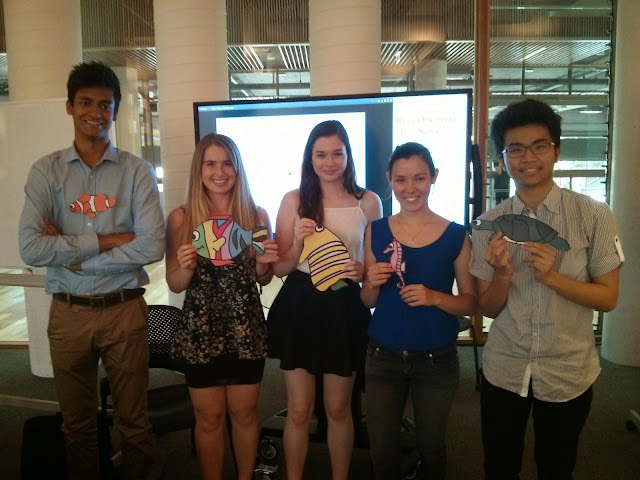The course aims:
1. Introduce students to design methods and techniques for the generation, refinement and implementation of design ideas in a project setting.
I felt that through this course i was introduced to many new design methods and techniques, through the use of the lectures displays, contacts and workshops. Through the lectures we were able to learn the basics of how to implement new techniques into our application and new tools that the IT industry uses. Within the contacts and workshops we were able to asks questions about these new tools and facilitate help if needed.
2. Provide students with the opportunity to work in multi-disciplinary teams on design computing projects
Within our group, we were able to gather many different skill levels and individuals who displayed strengths and weaknesses to different aspects of the IT design; this in turn helped us to develop our application as we had group members that allocated themselves to their own strength within the application construction.
3. Introduce students to techniques and methods for effective team work and project management
Within the team development skills and techniques, i felt that we were not taught a lot of items on this topic. Within my group, a few of the team members had disagreements about workloads and un-organisation. I think that in a future I would personally like a individual tutor to talk to us about how our group dynamics are working and make sure everything is running smoothly.
4. Develop students ability to communicate design ideas and outcomes through a variety of forms - visual, oral and written
I felt that this statement was clearly developed as for each assessment task we had to produce a visual element of the application, a written element and lastly as oral presentation. With these three elements combined, i felt that we were taught many different multi-disciplinary skills that will help me individually in the future.
5. Promote and foster creative thinking through projects.
Through the groups having to use an external resource to implement our application, i felt that we were able to think outside the box within our design and technical thinking process. With the external website being Trove, we were given a broad spectrum of concepts that we later created into a application.
6. Promote and foster critical analysis of design computing works - own and of others - through studio discussion, exercises and project work.
Within the contact sessions, the tutors conducted paper prototype sessions and digital prototype sessions to displays to help us discuss our application with potential users and retrieve vital feedback needed to develop our application. Within these session, we were also able to view other groups projects and discuss with them about their application and vocalise the changes that we would want seen.
7. Promote and foster reflective practice through feedback and discussion around project work.
Throughout this course, i felt that retrieving feedback and discussing what changes should be done to our application really changed the way i thought about group projects. Without the use of feedback and discussion, we would not have highlighted the positives and negatives of our application, thus helping our application to evolve into the state it is today.
8. provide students with the opportunity to apply skills and knowledge gained in other courses to design computing problems
Within the DECO1400 and DECO1100 course, we were able to learn about the basics of web design and creative thinking. Within the DECO1800 course i was able to apply these tools to be further developed within our application process.
9. provide students with the opportunity to build a body of work through the design and development of solutions to given problem space.
Within giving the problem space of Trove, I was highly uninterested in the data it provided, although it was interesting how much information it actually stored. In the future, i hope for the tutors choose a more interesting space that other students could relate to better.






















